Stanford Students Maximize Solar with SMA for Solar Decathlon Start.Home
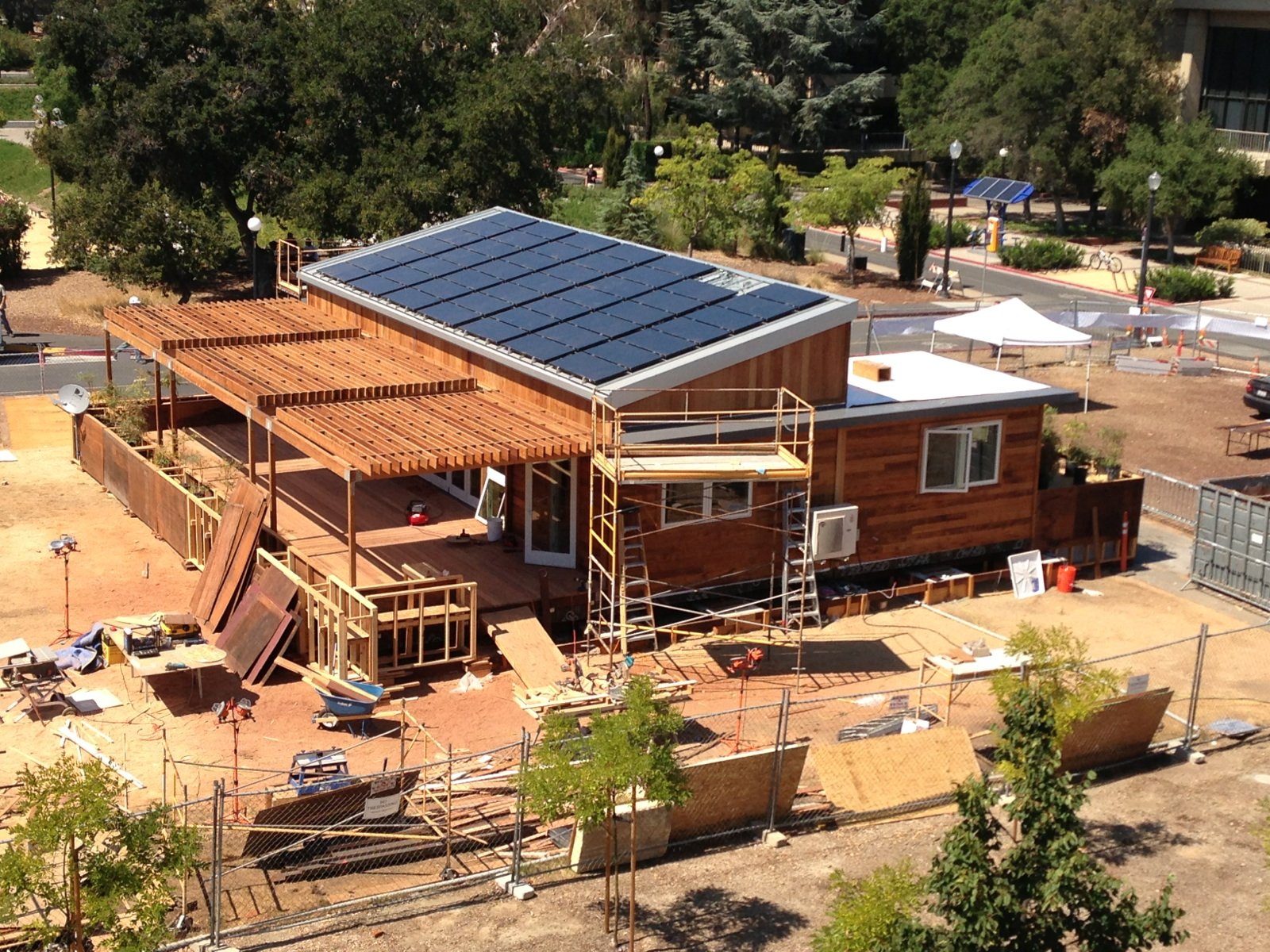
In October, the U.S. Department of Energy will host the 2013 Solar Decathlon at Orange County Great Park in Irvine, Calif. The Solar Decathlon challenges collegiate teams to build solar-powered, efficient and affordable houses, with a premium on aesthetic and functional design. Stanford University, whose entry is the Start.Home, is one of only 20 teams selected to participate from candidates around the world. SMA is proud to be a part of Stanford University’s innovative entry for this year’s competition.
Stanford’s Start.Home Concept
The Start.Home is a simple three-by-three modular grid that combines multiple technologies to maximize value and energy efficiency. The central design element of Stanford’s Start.Home concept is its CORE module. The CORE is a mechanical room located at the center of the home that contains all of the mechanical, electrical and plumbing systems.
The CORE is intended to be factory produced and shipped directly to a plot of land. A home builder will construct the remaining rooms of the home around it. Stanford students believe this concept enables builders to save not only time and money, but it also provides a pre-engineered “engine” that controls power production and each living space’s energy systems.
Unique Solar Design
The power source of Stanford’s Start.Home is a solar array comprising 48 Stion STN-135 CIGS thin-film PV modules connected to 12 Tigo Energy MM-2ES75 dual module maximizers and one SMA Sunny Boy 6000-US string inverter, located within the CORE. This unique design connects four PV modules into each maximizer – two modules in parallel into each input. The high voltage and lower current of the thin-film modules, combined with the high power-handling capacity of each maximizer (700 watts), allows for the number of maximizers to be reduced by half.
The output of four maximizers is connected in series to create an inverter input string, with three of these strings paralleled into the Sunny Boy inverter. This configuration allows optimization and monitoring of the array down to two module blocks, pulling every available watt possible out of the array and providing detailed performance data for the home’s energy management system.
The Sunny Boy 6000-US inverter efficiently converts the direct current (DC) from the module maximizers into usable alternating current (AC) for the Start.Home. The DC disconnect acts as the three-string fused combiner for the input strings. After conversion to AC, the power output of the inverter is sent to the home’s main electrical panel, also located in the CORE. The PV system is responsible for providing enough power to cover the entire household’s energy consumption. This solar power will potentially provide power back to the grid if the solar system is producing more energy than the loads require.
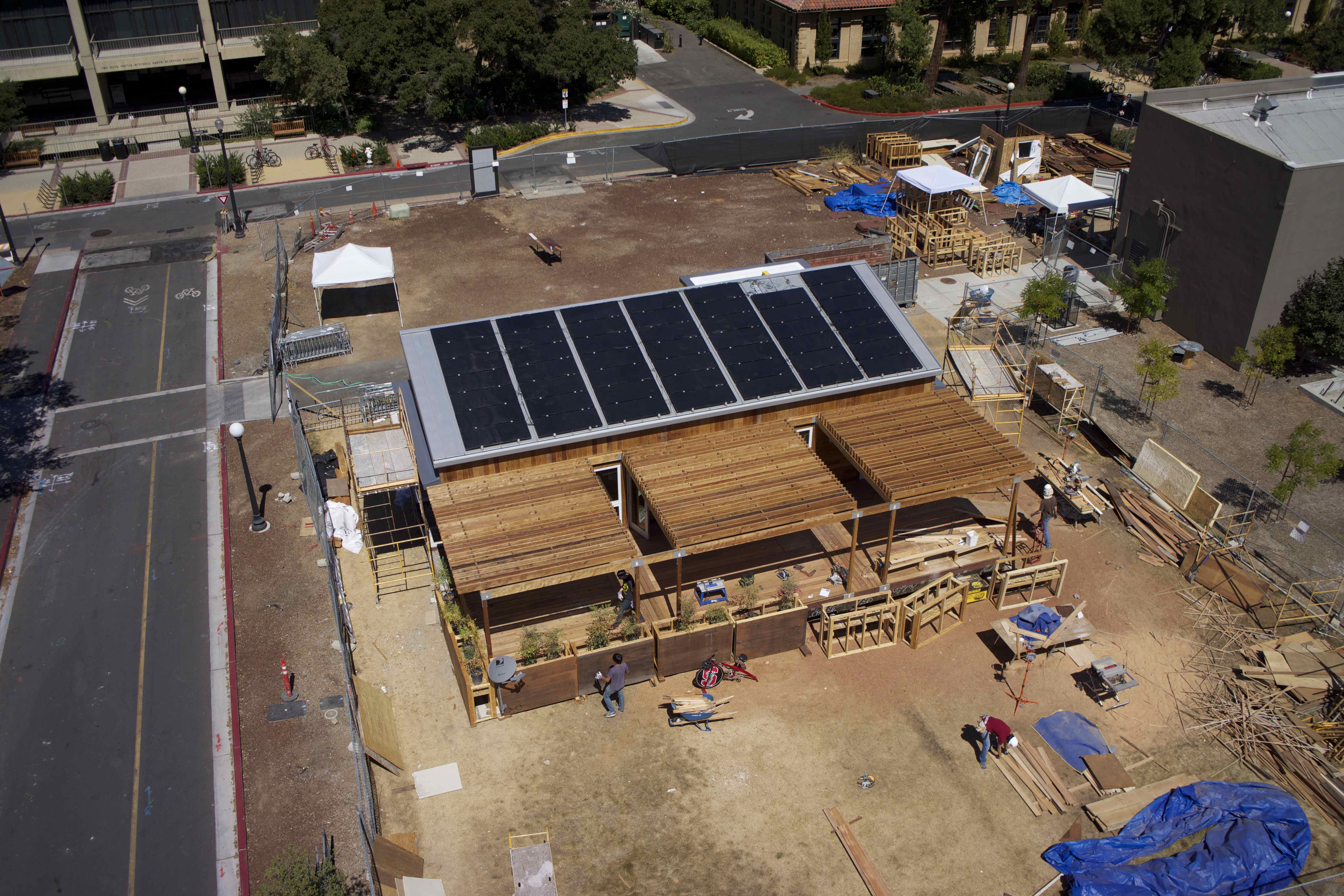
The Start.Home takes advantage of California’s great weather with plenty of outdoor living space along the backside of the house.
The Value of Energy
An advanced PV system design is only one of the many high-tech features of Stanford’s Start.Home. Students felt cutting-edge technology and a sustainable balance were both critical components for the Start.Home. Through interactive guidance and intuitive home automation, the home communicates to its occupants how much power it is producing and how much energy is being consumed. This constant communication brings an increased awareness of the value of energy and natural resources.
Bringing Down the House
Stanford students are working around the clock to finish the Start.Home before next month’s Solar Decathlon competition takes place. Once completed, the home will be disassembled into quadrants and shipped down California’s coast to Orange County Great Park. Once there, students will begin rebuilding the home, and add final touches before judging takes place.
After the competition closes, the Start.Home will be shipped back north to Stanford’s Jasper Ridge Biological Preserve, where it will be reassembled. The Start.Home will become the permanent off-grid residence of Jasper Ridge’s full-time park ranger and his family.
Free public viewing of the Start.Home and other entries will be held during the Solar Decathlon in Irvine, Calif. October 3-6 and 10-13 from 11 a.m. to 7 p.m. For more detailed information visit www.solardecathlon.gov.

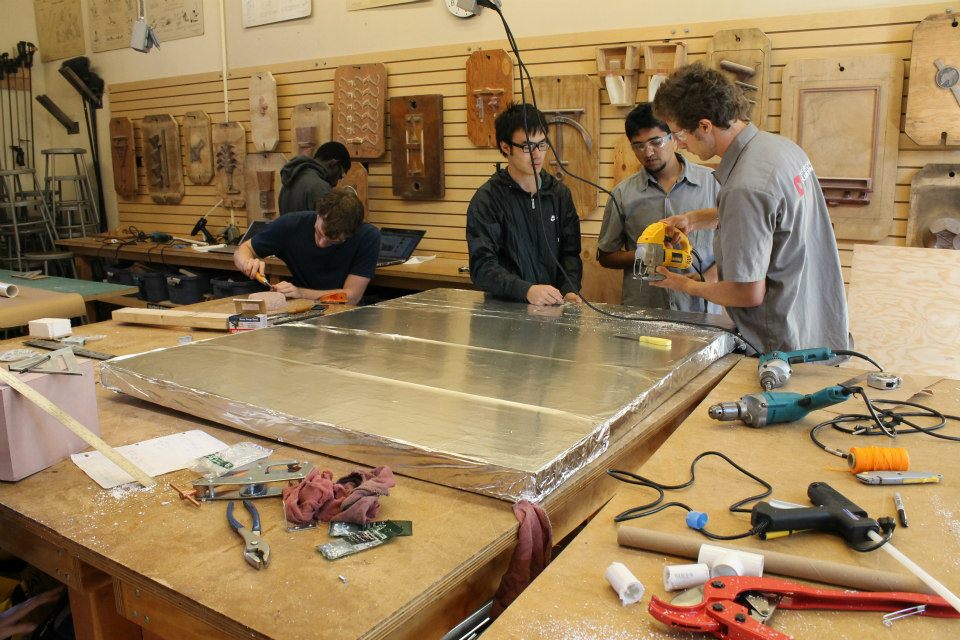
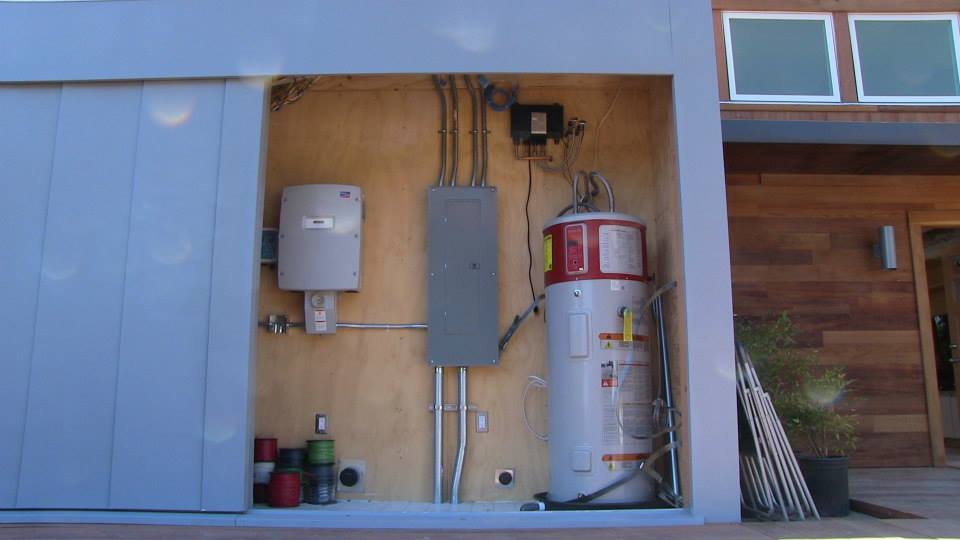
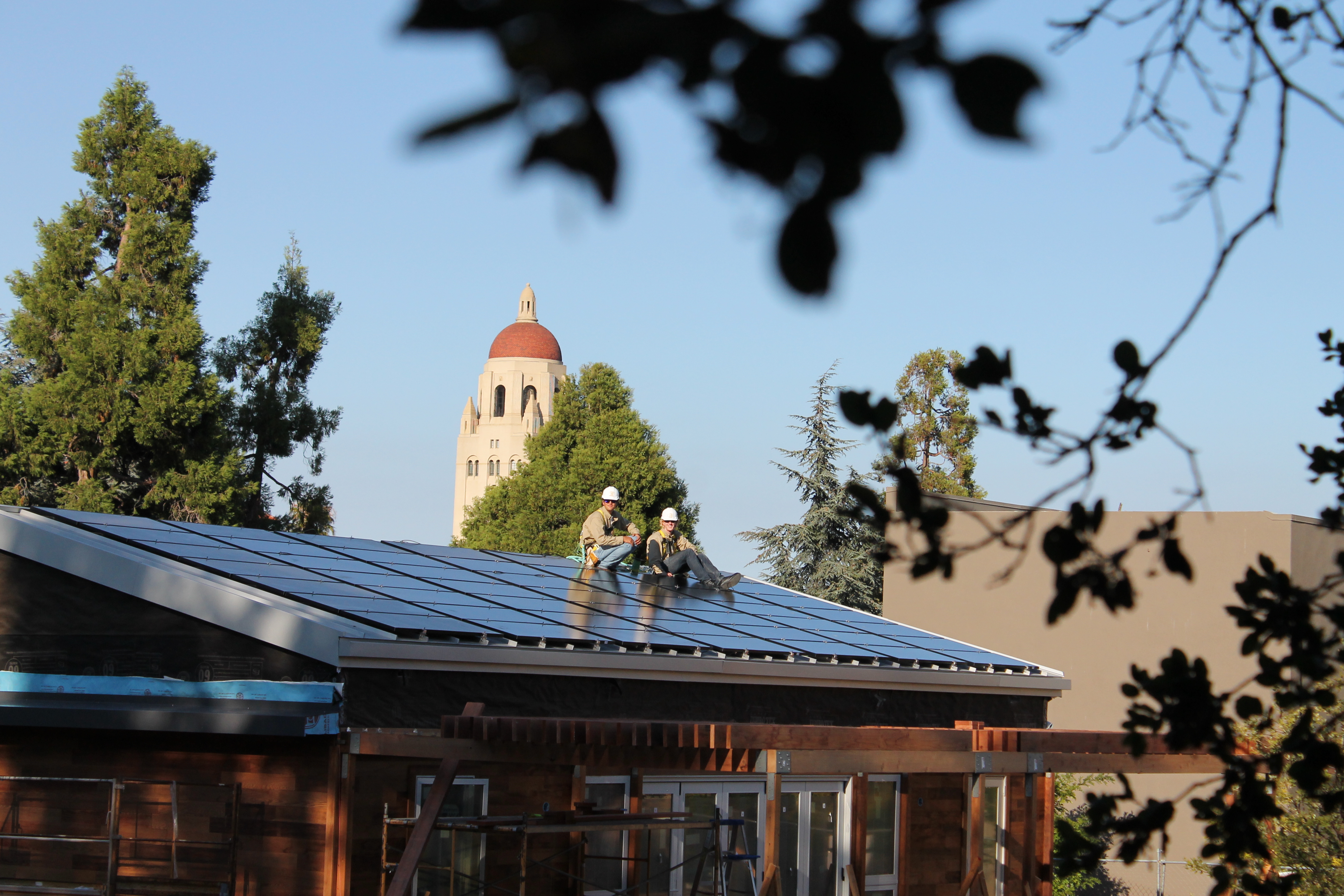
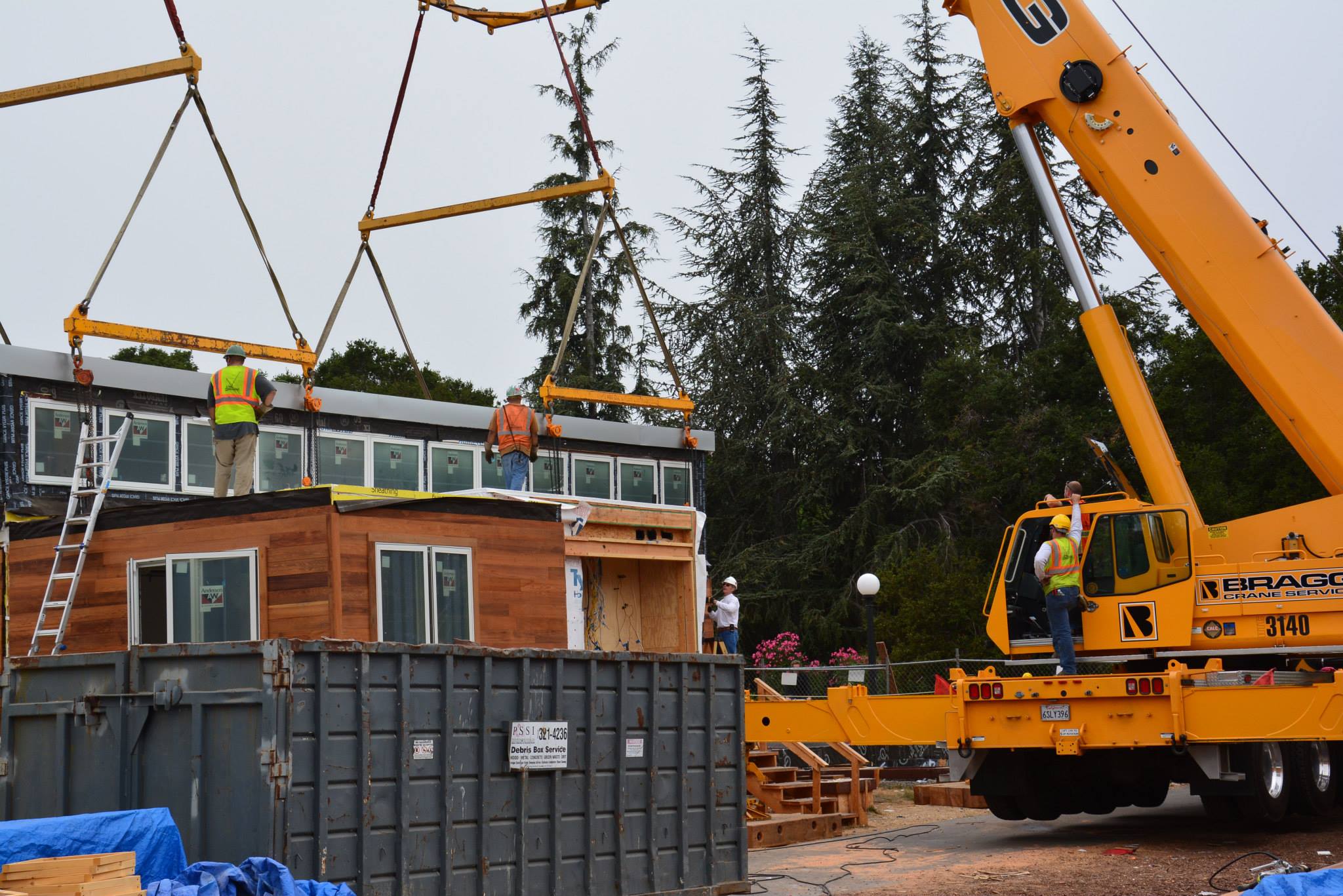
Trackbacks & Pingbacks
[…] Bron: fastcoexist.com Beeld: smainverted.com […]
[…] Bron: fastcoexist.com Beeld: smainverted.com […]
Feel free to contribute!